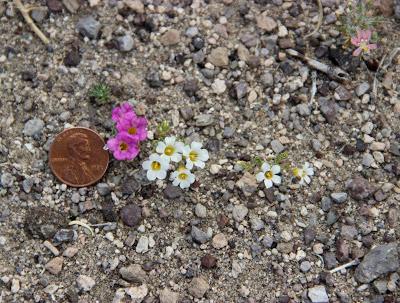
In late May, I drove Highway 773 through the Volcanic Hills in west central Nevada, about 45 miles west of Tonopah. It was harsh but beautiful country, with colorful rocks dating to about 20 million years ago, back when Nevada was a truly hellacious place. Huge calderas were erupting on a massive and terrifying scale. Viscous magma exploded from vents, and fiery sheets of ash and debris raced across the land, destroying everything for miles.Intent on examining the remains of that horrifying time, I turned off on the first promising two-track, parked at the toe of a sparsely-vegetated (so I thought!) alluvial fan leading up to multi-colored outcrops, and started walking. But I didn’t get far. I was stopped by hundreds of flecks of color on the ground.In between the shrubs, tiny plants were blooming. I suppose the show was lackluster compared with this year’s super bloom of the lower deserts—annuals so thick that they formed carpets of color. But I was impressed! It was such a surprise, and in some ways more rewarding. Only when I looked close did I see the beauty. The subdued display seemed fitting for the high desert, with its shorter growing season and harsh winters.
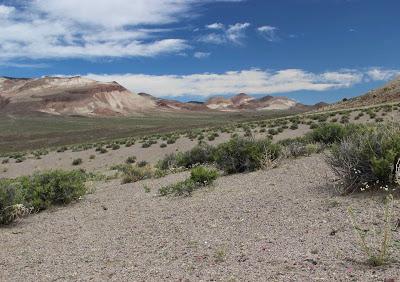
Click on image to see flecks of color (maybe).
I never made it to the volcanic rocks—spent a lot of time happily photographing flowers instead. Here are of some of the more common ones, all new to me. A humongous thanks to randomtruth at Nature of a Man for identifications … saved me from major struggles!Many were true belly plants—little annuals growing so close to the ground that I had to lie on my belly to get a good look (for scale, see photo at top of post). The first to catch my eye was ground nama, Nama aretioides (Boraginaceae), which was super common. Up close it looked like a fairy’s flower arrangement—miniature bright pink flowers with yellow throats streaked red, tidy clusters of hairy leaves.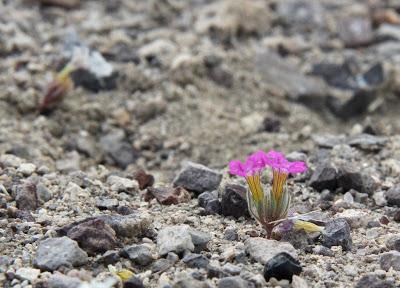
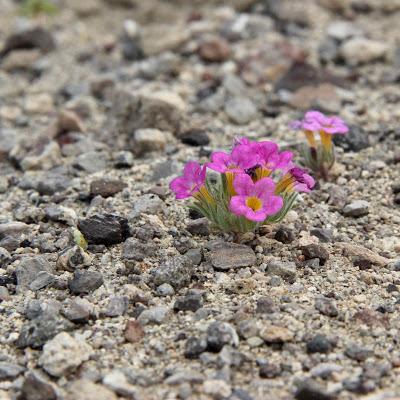
Desert calico (Loeseliastrum matthewsii, Polemoniaceae) has really distinctive bilateral flowers. For some reason they reminded me of surprised faces, maybe because of their dark pink "raised eyebrows." I like the common name, but couldn’t find an explanation for it. Maybe the flowers are enough mottled or multicolored to qualify as calico.
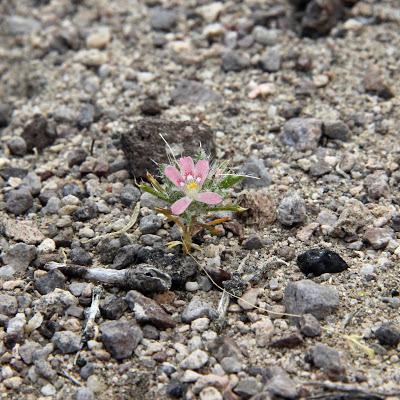
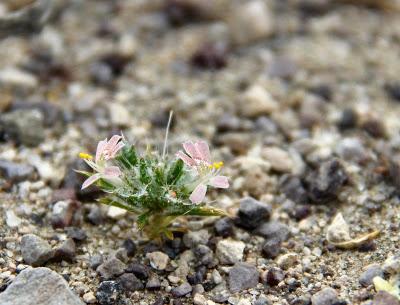
Apparently Linanthus campanulatus (Polemoniaceae) goes only by the awkward common name of bellshape gilia, a literal translation of an earlier scientific name, Gilia campanulatus. Sand grains stick to its stems because of its glandular hairs.
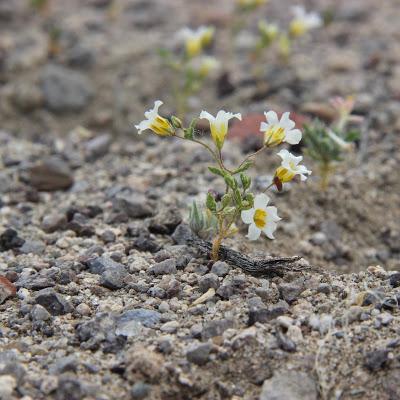
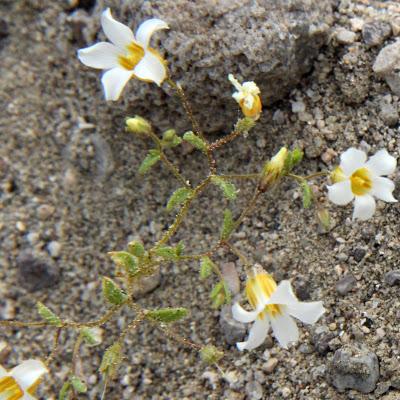
Sticky stems.
I easily recognized this next plant as a cryptantha (Boraginaceae), maybe because of the hairs—glassy spikes like those of many of our cryptanthas. This is cushion cryptantha or cushion catseye (C. circumscissa). Flowers are super tiny, about 1/8 inch across (1-2 mm).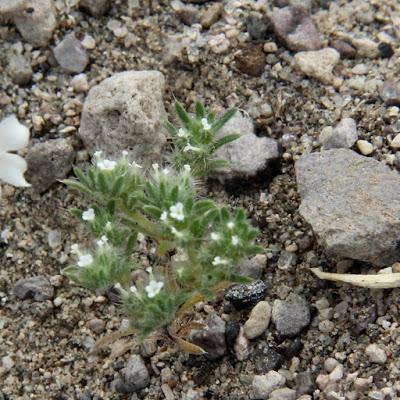
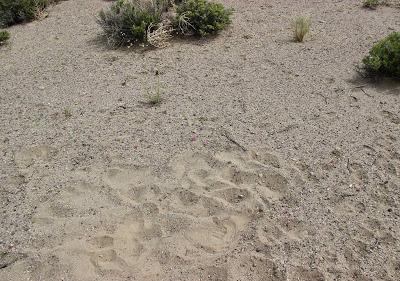
Signs of a belly-plant botanist.
Eventually I left the land of belly plants (above) and moved into a swale (below) where plants were denser and taller—must be (or have been) more water. These also were mostly annuals, even though they were bigger.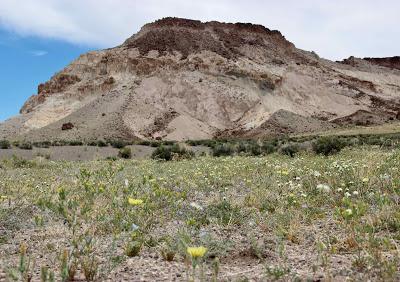
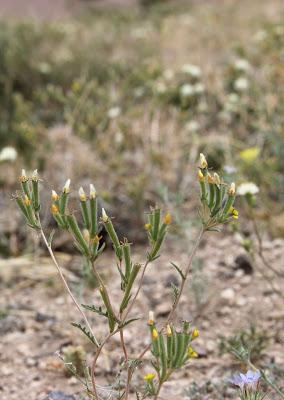
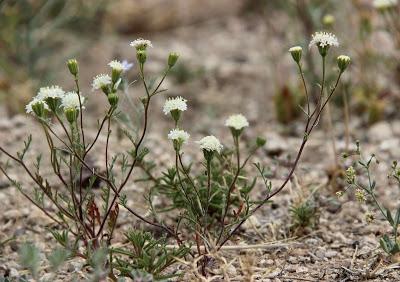
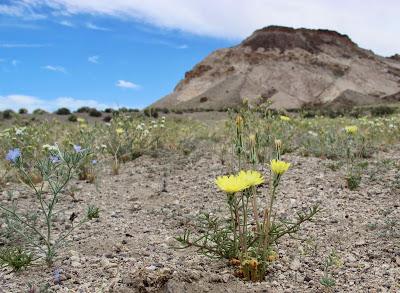
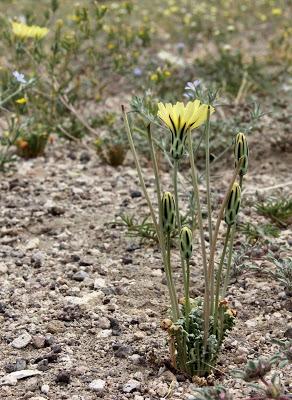
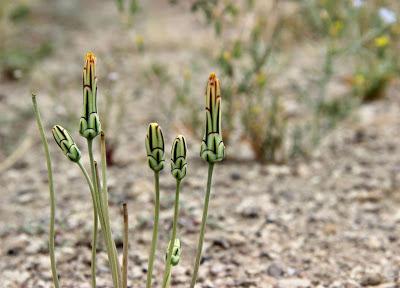
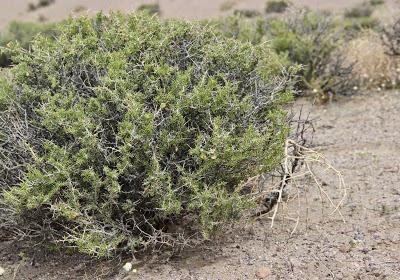
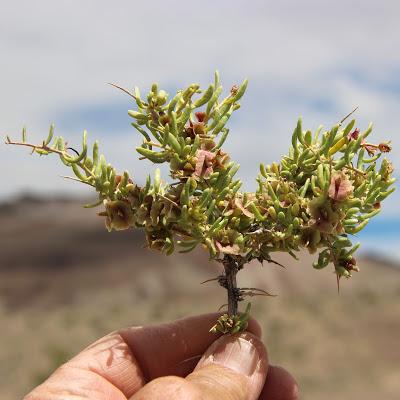
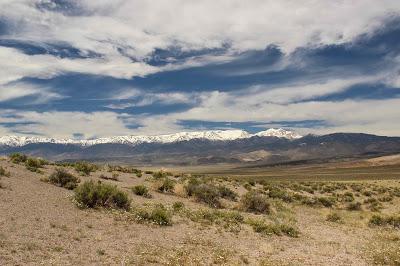
Greasewood on alluvial fan; White Mountains on horizon.
Footnote(1) Knight et al. (2014, Mountains and Plains, the ecology of Wyoming landscapes, p. 167) describe greasewood in foothills as an “anomaly, as it is usually found where groundwater is near the surface on saline soils …” However, Waring (2011, A Natural History of the Intermountain West, p. 146) includes badlands and playa dunes, as well as saline bottoms, as greasewood habitat.Sources
Two websites were especially helpful for verifying identifications and learning more about these plants. Foremost was the awesome Calflora (the Volcanic Hills are just 15 air miles east of California). Plants of West and Southwest USA was useful for selected species.
